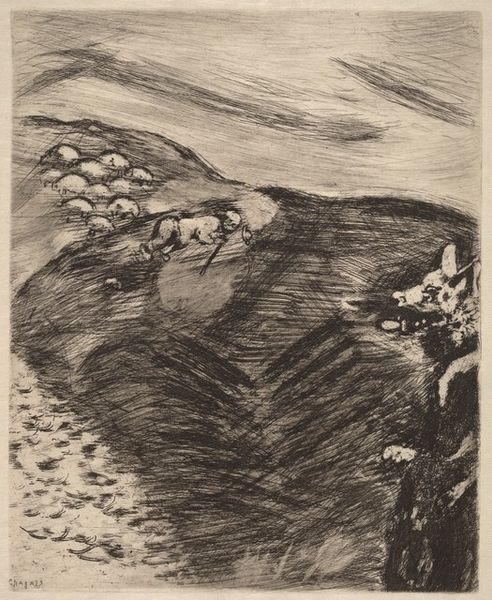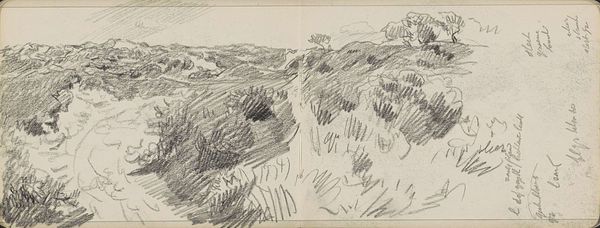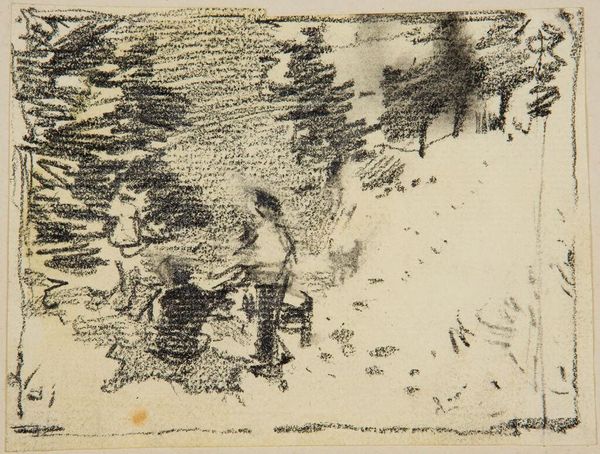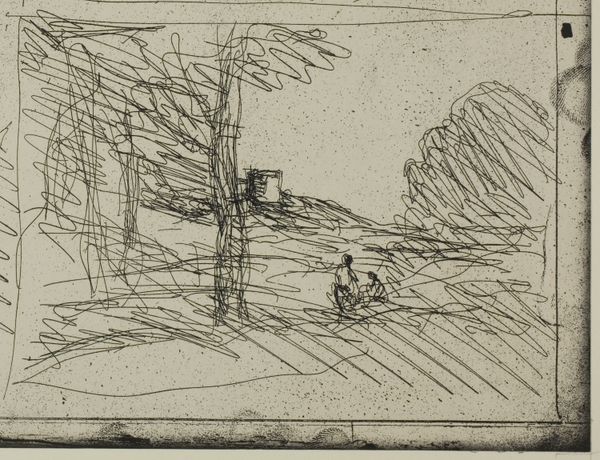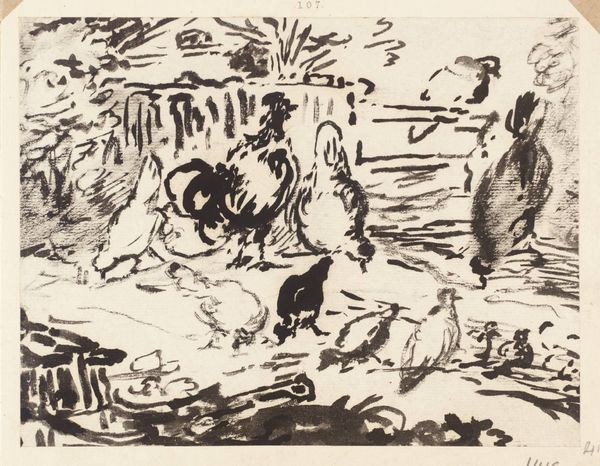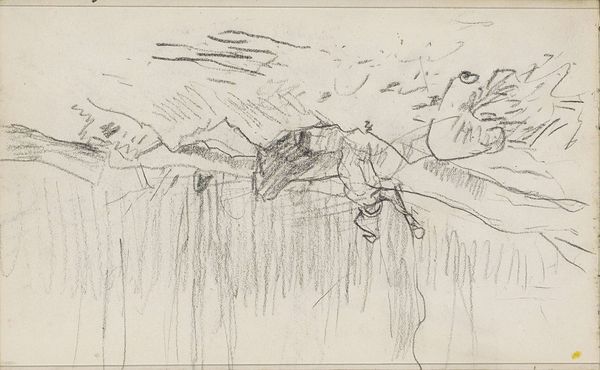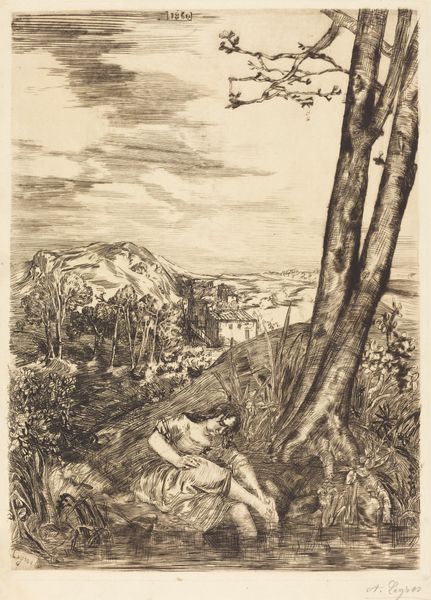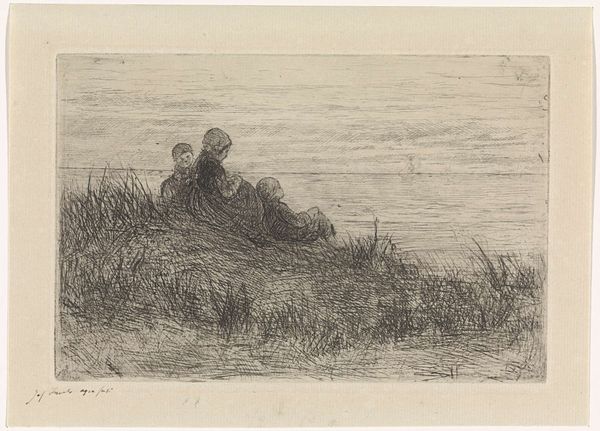
Copyright: Public Domain: Artvee
Curator: I'm immediately struck by the sense of quiet melancholy in this ink drawing, that sort of hazy dreaminess of a memory half-forgotten, you know? Editor: Indeed. This etching, known as "Nursemaid and Child," dates to around 1859 and comes to us from the hand of James Abbott McNeill Whistler. Look at the distribution of light. See how Whistler organizes the graphic space, primarily through tonal relationships in ink. Curator: It does have a compositional push-and-pull, doesn’t it? But there’s something so raw and tender about it. The scratchy, almost frenetic lines give such palpable depth to what might otherwise be a simple scene of a woman looking after a child. Like an ode to ordinary moments. Editor: Notice the etcher’s marks. They coalesce, yes, into representational forms, but also function as self-sufficient abstract units. Think about the semiotic density. It's like Whistler wants us to consider not only the 'what' of the scene—nursemaid, child, landscape—but also the 'how' of its construction, through lines, textures, and the subtle use of the white of the paper to suggest light and space. Curator: That negative space hums, doesn’t it? I can almost smell the grass, feel the breeze, see that nursemaid lost in thought while her tiny charge explores the meadow. Maybe I’m projecting my own wistful yearnings onto it! What’s wonderful about it is, there’s a universality, some shared secret about care and watching over life in bloom that just resonates so profoundly. Editor: And observe the contrast. See how the almost frenzied detail in the foreground softens into a gentler haziness as the view recedes into the distance. It mirrors, perhaps, the selective focus of memory, or even a formal study of Romantic aesthetics against the rise of Realism—note how only essential aspects are realized! The effect invites the viewer’s gaze to settle finally on that far horizon...a study of subjective viewpoints. Curator: In the end, for me, it is so powerful precisely because it evokes feeling. The scene might be quiet, even domestic, but the emotion...the connection it inspires. That’s anything but quiet. Editor: A fitting consideration to conclude. Whistler’s manipulation of tone and mark-making does elicit deep feeling, even if its true genius, I still argue, exists within its masterful control of medium.
Comments
No comments
Be the first to comment and join the conversation on the ultimate creative platform.


